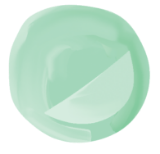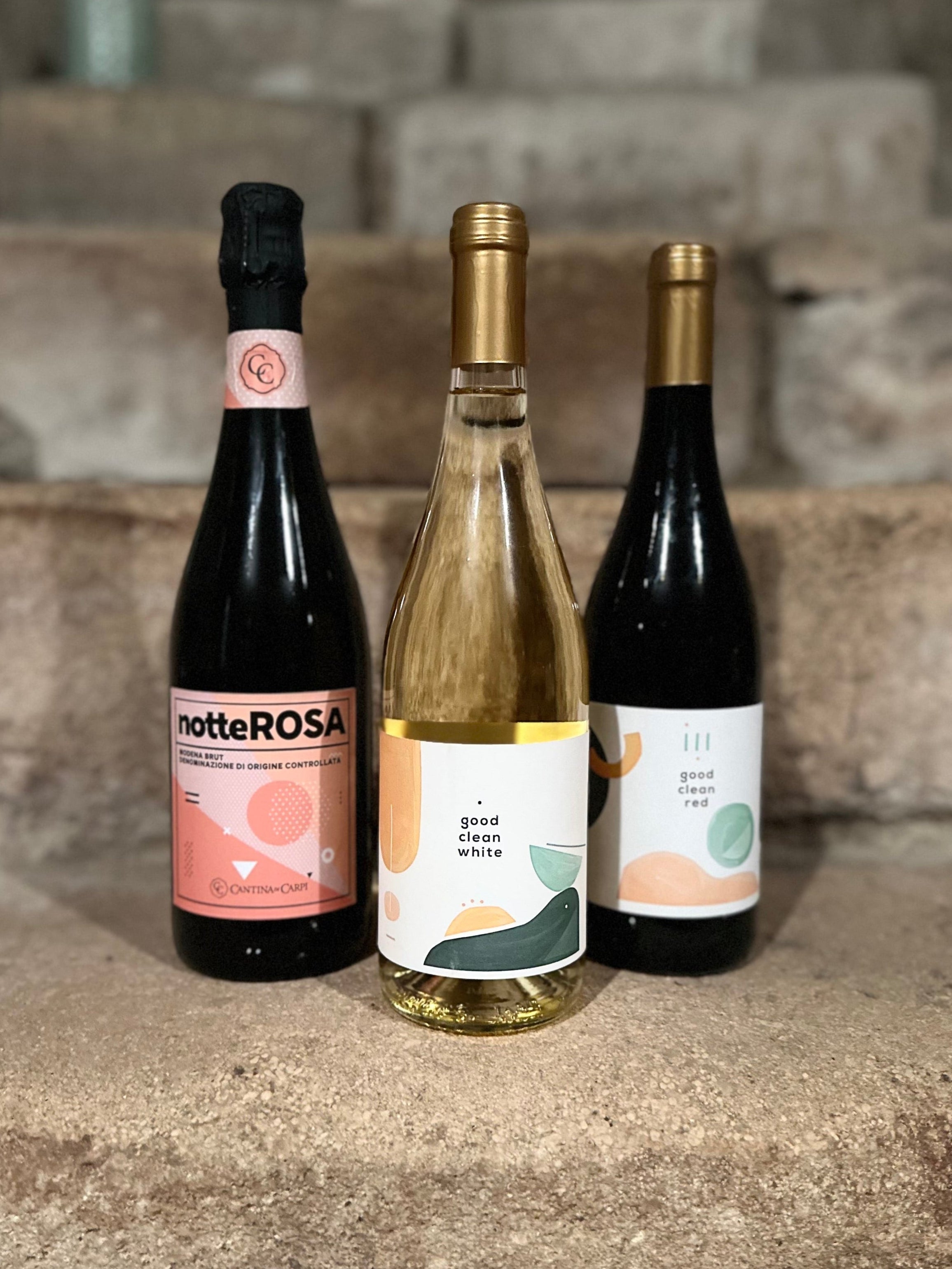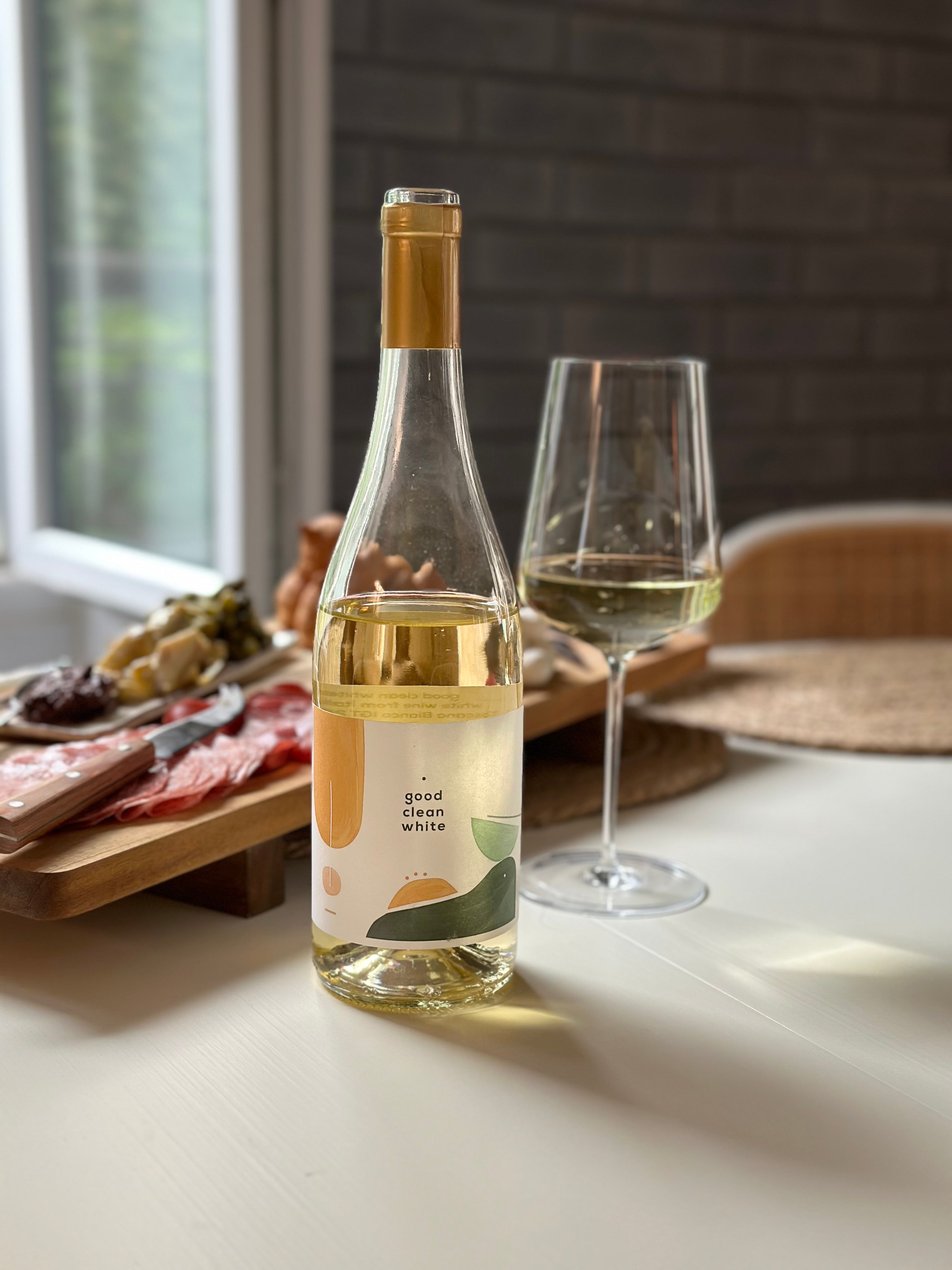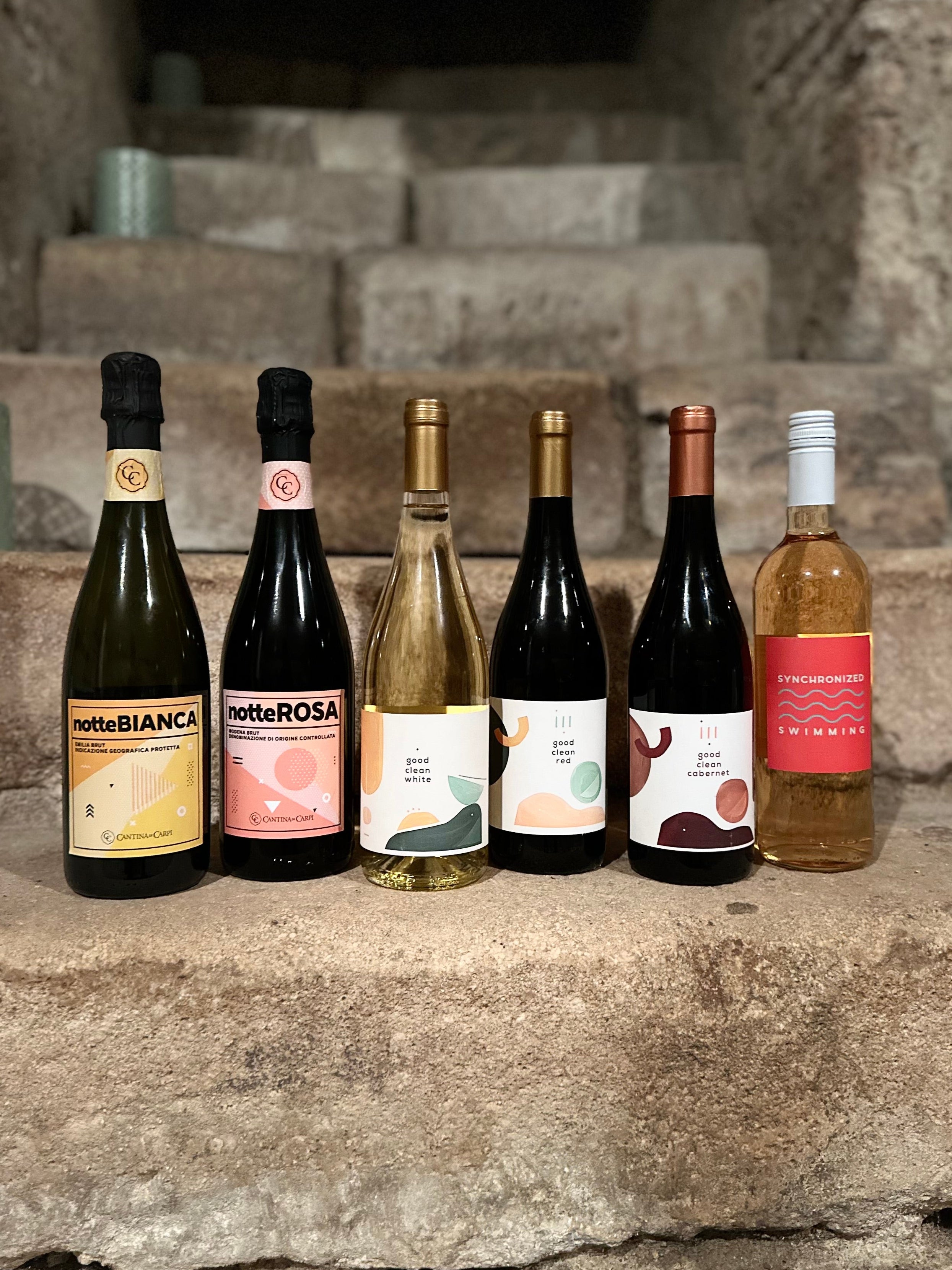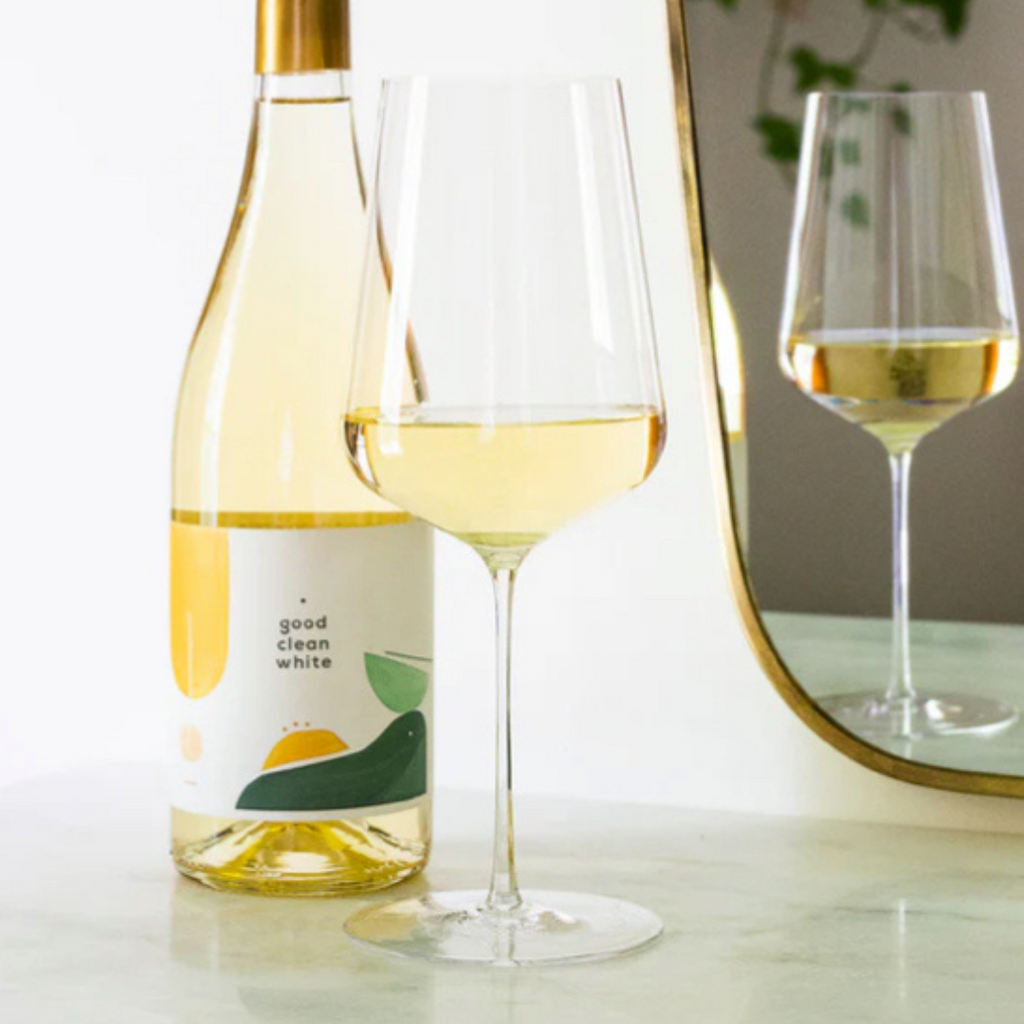
good clean white toscano bianco igt 2024
“the new good clean white is everything I want in a wine, bright, crisp, dry, and perfect for everyday and the weekend.” - dona p.
meet good clean white: a perfect balance of big fresh floral aromas and citrus flavors. good clean white is a memorable party guest because it’s easy drinking, interesting and neither too light nor too bold. high quality wine that’s easy on the wallet.
description: the color is straw yellow with green highlights. on the nose it bestows intense and pleasant scents of white flowers of elderberry and wysteria, the fruits of pear and apples with subtle aromatic herbs. on the palate, it’s pleasant and lively, dry & medium bodied. vibrant acidity with notes of zingy lime, white peach and a mineral finish expressing the essence of it’s origin. unoaked, crisp and fresh, delightful dry but not buttery and not sweet.
region: a refreshing blend of native Italian grapes from the Tuscan countryside near the sea. you can taste the unique and perfect combination of climate, soil and altitude with little outside intervention. made by grape growers and winemakers using 100% sustainable farming and minimal-intervention in the appellation of Maremma on the southwest coast of the Tuscan wine region. close to the sea, in the untouched countryside in the province of Grosseto. a land full of well-kept secrets, gentle rolling hills, defined by plots of wheat, scattered with vineyards and olive orchards dotted with sheep. here and there a farm appears on a hilltop with a view that stretches to the Tyrrhenian sea.
grapes: a tuscan white blend of vermentino, trebbiano, and viognier.
vermentino: bright and acidic, with a citrus-driven aroma. grown in sandy clay, and limestone along the southern Tuscan coast in Maremma. bursts with lemon zest, lime, green apple, and ripe orchard fruit, layered with jasmine, Mediterranean herbs, and a signature saline note that recalls the sea. lively, refreshing, and food-friendly.
trebbiano: fresh and fruity, food-friendly grape producing tough-skinned berries that yield yellow juice grown in Italy as far back as Roman times. dry, medium-light body, no tannins, medium-high acidity with flavors of peach, lemon, green apple, seashell and basil.
viognier: originally from France’s Rhône Valley, thrives in Maremma. the tyrrhenian breezes and sandy clay-limestone soil creates a ripe peach, apricot, melon, and hint of tropical fruit, with a layer of orange blossom, honeysuckle, and jasmine. silky texture, moderate acidity, and a touch of salinity.
training system: spurred cordon
vine density: 4000 plants / hectare
type of soil: sandy and rich of silt
altitude: variable from 100 to 300 metres a.s.l.
age of the vines: 5-7 years
harvesting time: mid September
fermentation: from vermentino, trebbiano and viognier. harvest and preservation of the grapes with carbonic snow. low temperature pressing in inert atmosphere; fermentation of the prime must at controlled temperature; free-run must fermentation at controlled temperature (max 16°C). No malolactic fermentation.
maturation: in stainless steel tanks for three months with the lees.
bottling: starting from January of the following year.
ageing potential: best drank young, within 2 years from its harvest.
pairs with: hard italian cheeses, chicken pesto pasta, shrimp-arugula salad, chèvre cucumber topped baguette slices and italian fried artichokes.
serve at: 45-55 degrees in a white or universal glass.
alcohol: 12.5% abv
acidity: 5.27 g/l
residual sugar: 3.80 g/l, less than .56 grams per residual sugar per 5oz glass. Residual sugar in popular sweet white wines like Muscato can contain up to 14.7 grams pf sugar per glass. Regular chardonnays and dry white table wines can contain up to 1.4 grams of sugar per glass.
kcal: 72.80 per 100ml
igt: indicazione giographica tipica. a wine classification introduced in 1992 as part of the general reorganization of the d.o.c. italian wine law, to safeguard the quality and authenticity of the wine. these safeguards form regulated protected zones to ensure a higher quality of wine. this category of wine allows more freedom than doc and docg levels but ensures a higher quality of wine than the relatively unregulated table wine category.
it's good to sip from day to night.
it's clean and minimal-intervention, produced and grown sustainably in small batches.
it's wine you can feel good about drinking.
